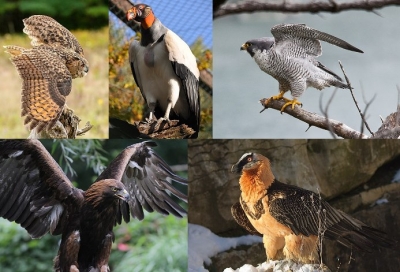
Birds of prey, also called raptors, are birds that hunt other animals for food. The word ‘raptor’ comes from the Latin word ‘rapere’ which means seizing an object (in this case the prey) by force and carrying it off for consumption. Birds of prey are the apex predators found in every environment on the Earth including freezing mountains, arid deserts, crowded cities and thick forests.
One might wonder if raptors include crows and cranes. Not so, because raptors are specifically birds that use hunting techniques and body adaptations like sharp, curved talons and bills, matchless flight capabilities and keen eye-sight to capture, hold and consume their prey. Birds classified as raptors share a common history. They have evolved from terrestrial birds that preyed mainly on vertebrates. Raptors hunt vertebrates such as fish, reptiles, amphibians and small mammals.
So how does one recognise a raptor? A raptor is usually a strong, heavy bird with sharp vision, large wings, a hooked beak and powerful talons. The beak of a raptor is curved with sharp edges to tear apart prey. A raptor’s feet and legs are perfectly designed to catch, hold, and carry prey. For toes, it has sharp, powerful claws called talons with three talons pointing forward and one talon pointing backward.
This foot arrangement is called ‘raptorial’ and helps the bird to clutch its prey in a secure grip. Raptors are believed to have the best eyesight among all animals which helps them to spot their prey from great distances in the air. Female raptors are generally larger than males. In addition to hunting live prey, many birds, such as fish eagles, and vultures, eat carrion.
Raptors are classified into Falconiformes and Strigiformes. Hawks, eagles, vultures and falcons fall in the order of Falconiformes which comprises more than 300 species. Owls fall in the order of Strigiformes which is a group made up of more than 200 species. Raptors are further divided into two main groups – diurnal or day-flying birds, and nocturnal or night-flying birds.
Picture Credit : Google




